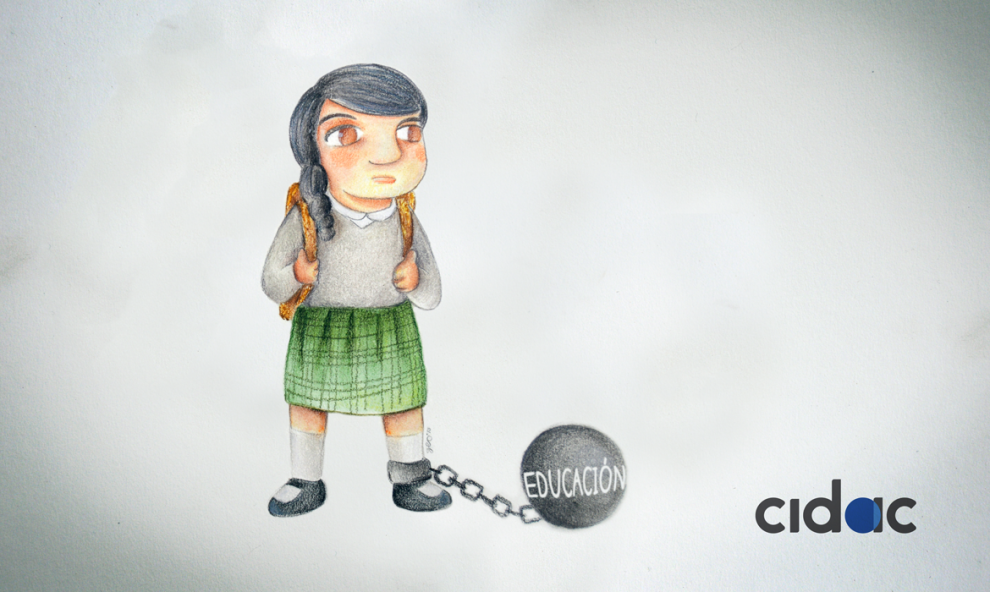“The objective is to protect the union, defend its privileges and guarantee the source of support that teachers represent for electoral processes”. I don’t know whether that would be admitted by some PRIist strategist, but that has been the strategy of the Mexican government with respect to the teachers’ union from ancestral times. Education in Mexico was conceived as an instrument for controlling the population and the union became a useful means for achieving and upholding the ideological hegemony that “the system” strived for. The child, the supposed beneficiary of education (free, lay and secular in the PRI mythology) was secondary in the scale of priorities. The same is true of the union: as the “useful idiot” of Soviet political literature, what was important was the control and not the result. Today, nearly a century later, it is possible to appreciate the cost of such irresponsibility
It would not be surprising to anyone who observed the history of the education of the country, ranging from debates on the constitution to the socialist education of Cárdenas, that the prototypical Mexican student obtains less than 1 in average score in the Programme for International Student Assessment (PISA) test, the lowest score of any country participating in this evaluation. Instead of dedicating itself to the child, supposedly the subject of the tutelage, the political system has for nearly a century worked to keep the population quiet, in check and subordinate. The problem is that today’s world does not countenance that reality: the economy does not know how to deal with unavailing subordinates instead of creative persons, who are likely to contribute to the development of a modern economy.
The educative reform, with all of its imperfections, at least attempted to pinpoint the educative problem characterizing the country. Whether due to fear of failing the evaluation or the corruption of their leaders, the National Coordination of Education Workers (CNTE) as well as the National Union of Education Workers (SNTE) defend an educative schema that implies maintaining a status quo that only serves those leaders: it does not help the children, it does not contribute to the development of the country and does pose a threat to political stability. That is, the educative system engendered to perpetuate stability and the PRiist empire ad hominem has listed to the opposite flank: now the risk of education rendering development (and stability) impossible is real.
What is desirable, rational, would be to accept that the “historical” solution (corporatism oriented toward control rather than development) does not work and has become an unmanageable problem. The political and ideological rationality typifying the regimen’s educative policy –control and subordination- undermines technological development, hastens poverty and prolongs underdevelopment. What appears to be so obvious continues to be anathema for the greater part of the political world. However, until the disappearance of that corporatist view, the country will endure sunken in its vicious circles. The problem is one of essence: it must be acknowledged that what exists does not teach how to think, the key to development, or we will continue to press on toward underdevelopment.
While perhaps exacerbated in Mexico, the problem is not exclusively Mexican. Countless countries face the same challenge: how to remodel education into a key factor, a positive factor, for economic development. All current educative system evaluations exhibit absolute incompetence and the examinations reveal a systemic failure that primordially affects the most vulnerable population: the poor. Instead of education working as a transformer means that opens opportunities for development to children, the former preserves the poverty and vicious circles that characterize us.
The relevant question is what or who should be placed at the heart of the educative system. For almost a century, the two factotums of education in Mexico have been the teachers’ union and the bureaucracy of the Secretariat of Public Education (SEP). The system was never designed to nor did it pretend to educate children. I ask myself whether it is not time to start there: by positioning the child at the center of the equation.
To do that would imply altering all of the mythos of education, beginning with the public variety. In Africa and Asia interesting experiments may be observed with regard to enterprises devoted to education that have achieved at least a consistent and transparent educative system yielding increasingly better results. I’m not proposing ending public education, but rather promoting and favoring the growth of that ogre, the private school, as a means of generating competition and disruption in, feasibly, the last bastion of nearly unmitigated governmental control.
Private education has comprised an exclusive realm of the population with resources, but in Asia and Africa its greatest growth is among the most poverty-stricken, where otherwise interesting innovations are discerned. The best proof that this is viable is that there is practically no family in Mexico that would not prefer a private education for their children were it to have the possibility of defraying the cost of one. A mechanism of school vouchers for financing it would allow for forcing unionized teachers to “get their act together” but also, –above all- would uncork options for the neediest Mexicans and, in educative terms, –those left behind.
The problem of education is not budgetary but political. It is time to forsake the objective of keeping the population ignorant and the answer lies in competition, which can only arise from for-profit enterprises committed to education.
@lrubiof





Comments